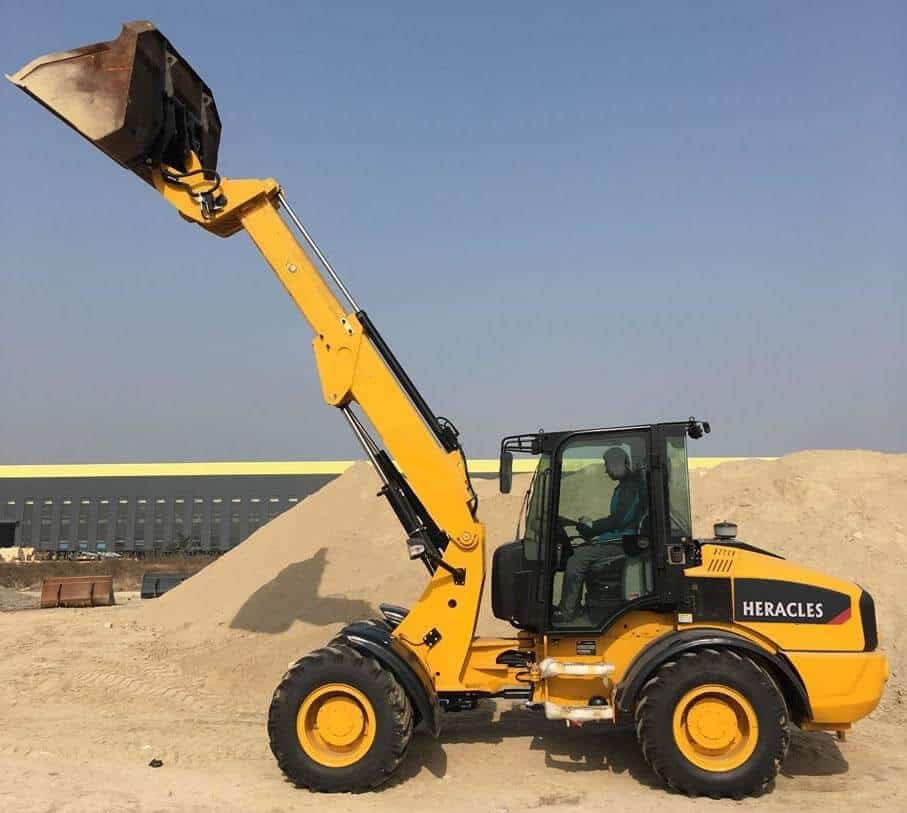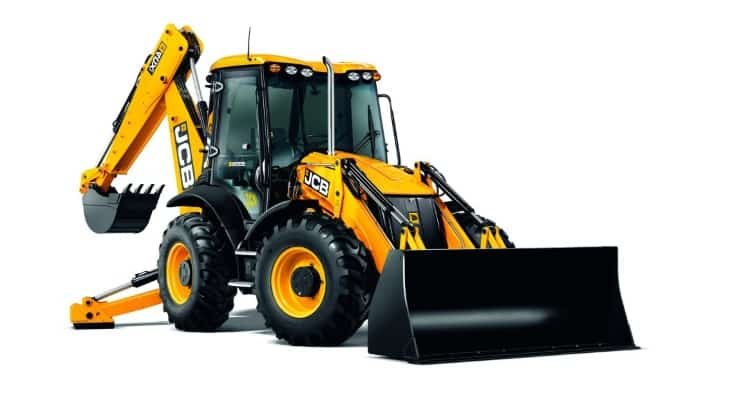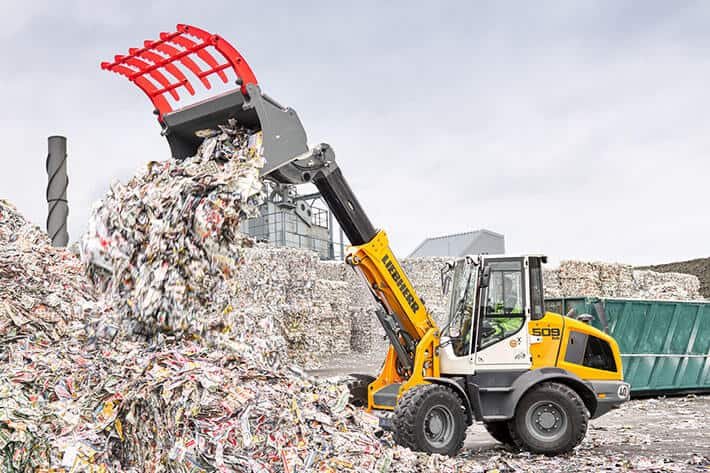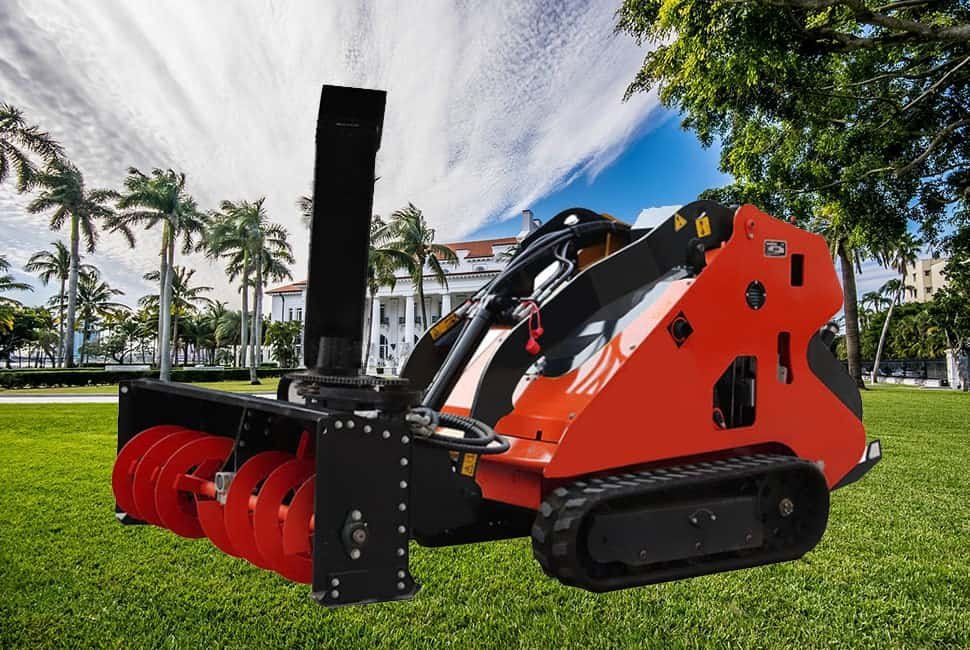Introduction
Are you torn between choosing a Telescopic Loader Machine or a backhoe loader for your next construction project? The decision can significantly impact the efficiency and success of your venture. In this blog, we will compare telescopic and backhoe loaders, helping you determine which suits your specific project requirements better.
By exploring each machine’s unique features, advantages, and limitations, we aim to provide valuable insights to make an informed decision. Whether you’re working on a multi-story building or a landscaping project, understanding the key factors influencing your choice will empower you to select the right equipment for the job.

Understanding Telescopic Loader Machines
When understanding Telescopic Loader Machines, let’s start with the basics. A Telescopic Loader Machine, or telehandler, is a versatile construction equipment designed to handle various tasks.
It features a telescopic boom that can extend and retract, allowing for increased lifting height and reach compared to other loaders.
This unique design enables Telescopic Loader Machines to access confined spaces and work efficiently in challenging environments.
Advantages of Telescopic Loader Machines
Some of the advantages of Telescopic Loader Machines are given below.
Increased Lifting Height and Reach
One of the primary advantages of Telescopic Loader Machines is their impressive lifting height and reach capabilities. With the extendable boom, these machines can reach heights of several stories, making them ideal for tasks such as stacking materials, loading/unloading trucks, or working on elevated structures.
The ability to reach higher elevations ensures greater productivity and saves time on a wide range of projects.
Versatility and Maneuverability
In addition to their exceptional lifting capabilities, Telescopic Loader Machines offer remarkable versatility and maneuverability. These machines typically come with 360-degree rotating booms, allowing operators to easily work in tight spaces and navigate obstacles.
Whether operating in a congested construction site or a cramped warehouse, the Telescopic Loader Machine’s agility ensures efficient material handling and improved productivity.
Ability to Handle a Variety of Attachments
Furthermore, Telescopic Loader Machines excel in their ability to handle various attachments. They can be equipped with forks, buckets, grapples, and other tools, transforming them into multipurpose machines.
This adaptability makes Telescopic Loader Machines suitable for various tasks, including lifting, carrying, loading, and even operating hydraulic attachments like augers or sweepers. Switching attachments quickly adds flexibility to your operations, reducing the need for multiple machines and saving time and resources.
Limitations of Telescopic Loader Machines
While Telescopic Loader Machines offer numerous advantages, it’s essential to consider their limitations when deciding on the right equipment for your project. Some of the limitations of Telescopic Loader Machines are given below.
Lower Digging Capability Compared to Backhoe Loaders
While Telescopic Loader Machines offer numerous advantages, it’s essential to consider their limitations when deciding on the right equipment for your project. They can handle light excavation tasks, but their digging depth and power are not as robust as backhoe loaders.
Therefore, a backhoe loader might be a more suitable choice if your project involves extensive digging or trenching work.
Reduced Stability at Maximum Reach
Another limitation of Telescopic Loader Machines is their reduced stability at maximum reach. As the boom extends outward to its full length, the machine’s stability can be compromised, especially when handling heavy loads. Operators must exercise caution and ensure proper load distribution to maintain stability and prevent tipping accidents.
In situations where stability is critical, such as working on uneven or rough terrains, a backhoe loader’s design provides better stability due to its wider base and lower centre of gravity.
Higher Initial Investment Costs
Lastly, it’s important to consider the initial investment costs associated with Telescopic Loader Machines. Due to their advanced features, increased reach, and versatility, Telescopic Loader Machines generally come with a higher price tag than other loaders. This can be a factor to consider if you’re working with budget constraints or have a short-term project.
However, it is essential to evaluate the long-term benefits and potential cost savings offered by Telescopic Loader Machines, such as their ability to handle multiple tasks and reduce the need for additional machinery or attachments.

Exploring Backhoe Loaders
Now let’s explore backhoe loaders, another popular option for construction projects. Backhoe loaders are versatile machines that combine the capabilities of a loader and a backhoe (excavator) in a single unit. This combination of functionalities makes them highly efficient and adaptable to various tasks.
Advantages of Backhoe Loaders
Superior Digging and Excavation Capabilities
The basic features of a backhoe loader include a loader bucket on the front and a backhoe attachment on the rear. The loader bucket is used for material handling, such as loading and transporting soil, gravel, or other materials. On the other hand, the backhoe attachment is designed for excavation and digging tasks, including trenching, digging foundations, or landscaping.
Enhanced Stability and Maneuverability on Rough Terrains
Backhoe loaders’ primary advantages are their superior digging and excavation capabilities. With their powerful hydraulic system and specialized digging arm, backhoe loaders can dig deep trenches, excavate large quantities of soil, and tackle heavy-duty digging tasks.
Their digging depth and reach are typically greater than that of Telescopic Loader Machines, making them ideal for extensive excavation projects.
Backhoe and Loader Functionalities in a Single Machine
Backhoe loaders also offer enhanced stability and maneuverability, particularly on rough terrains. The design of backhoe loaders features a wider wheelbase and a lower centre of gravity, providing better stability and balance during operation.
This stability is especially beneficial when working on uneven or challenging surfaces. Backhoe loaders are known for their ability to navigate rough terrains, such as construction sites or agricultural fields, with ease and precision.
Limitations of Backhoe Loaders
While backhoe loaders offer a range of advantages, it’s crucial to consider their limitations before deciding on your project.
Limited Reach and Lifting Height Compared to Telescopic Loader Machines
One limitation is the limited reach and lifting height compared to Telescopic Loader Machines. Backhoe loaders typically have shorter reach and lifting capabilities, making them less suitable for tasks that require reaching high elevations or handling materials at significant heights.
A Telescopic Loader Machine might be more appropriate if your project involves working at height or requires extensive vertical reach.
Less Versatility in Handling Various Attachments
Another limitation of backhoe loaders is their relatively lesser versatility in handling various attachments. While backhoe loaders excel at digging and material handling tasks, their attachment options are typically more limited than Telescopic Loader Machines.
Telescopic Loader Machines often have a wider range of attachments available, allowing for greater versatility in performing different tasks on the job site. A Telescopic Loader Machine might offer more flexibility if your project requires frequent attachment changes or specialized equipment.
Higher Fuel Consumption and Maintenance Costs
Additionally, it’s important to consider the higher fuel consumption and maintenance costs associated with backhoe loaders. Due to their larger size, higher engine power, and more complex hydraulic systems, backhoe loaders consume more fuel than Telescopic Loader Machines.
Additionally, backhoe loaders’ maintenance and repair costs can be higher due to their intricate mechanical and hydraulic components. It’s essential to factor in these ongoing expenses when considering the long-term operational costs of a backhoe loader.

Factors Influencing the Choice
Several factors play a crucial role in determining whether a telescopic or backhoe loader is the better choice for your project. Evaluating these factors will help you make an informed decision aligning with your needs.
Project Requirements and Scope
First and foremost, consider your project requirements and scope. Assess the tasks involved, such as digging, material handling, or reaching heights. Determine the magnitude and duration of the project to understand the equipment’s usage frequency and duration. This analysis will help identify the primary functions and capabilities required, aiding the selection process.
Nature of Tasks and Operational Flexibility Needed
The nature of tasks and the operational flexibility needed is another important consideration. A backhoe loader’s specialized capabilities may be more suitable if your project demands extensive digging and excavation. On the other hand, if versatility and maneuverability are crucial for various tasks and attachments, a Telescopic Loader Machine’s adaptability may be preferred.
Site Conditions and Terrain Characteristics
Site conditions and terrain characteristics are vital factors to evaluate. If your project involves working on rough or uneven terrains, a backhoe loader’s stability and maneuverability might be advantageous. Alternatively, the Telescopic Loader Machine’s compact design and agility could be more favourable if you anticipate working on confined or congested sites.
Time and Budget Constraints
Time and budget constraints should also be taken into account. Consider the project timeline and any strict deadlines. Assess your budget limitations, including initial investment and ongoing operational expenses. Comparing the cost-effectiveness of telescopic and backhoe loaders with your project’s duration and financial constraints will help you make a balanced decision.
Operator Experience and Familiarity With Specific Equipment
Lastly, consider the operator’s experience and familiarity with specific equipment. Your operators’ skill set and expertise play a significant role in the efficient and safe operation of the machinery. Assess their experience with telescopic or backhoe loaders and evaluate their comfort and proficiency levels with each type.

Case Studies and Examples
Case Study 1: Construction of a Multi-Story Building
Constructing a multi-story building project requires a combination of tasks, including material handling, excavation, and reaching heights. A Telescopic Loader Machine offers advantages in terms of its increased lifting height and reach. It can efficiently handle tasks such as loading construction materials onto upper floors and maneuvering in tight spaces.
However, the limited digging capability may challenge extensive foundation work. In contrast, a backhoe loader excels in digging and excavation tasks, providing superior capabilities for digging foundations and trenches.
Considering the project requirements and the need for material handling and excavation, a recommended choice would be to utilize both machines. Employing a Telescopic Loader Machine for material handling tasks and a backhoe loader for digging and excavation would provide the optimal combination of functionalities for the construction project.
Case Study 2: Landscaping and Excavation for a Residential Project
In a landscaping and excavation project for a residential area, the primary tasks involve digging trenches for utilities, moving soil, and transporting landscaping materials. A backhoe loader is particularly suitable for this project due to its superior digging capabilities. It can efficiently excavate trenches, level the ground, and handle various landscaping materials.
While a Telescopic Loader Machine offers versatility in material handling and attachment capabilities, the limited digging depth may hinder efficient excavation work. Therefore, the backhoe loader would be the recommended choice for this project, as it provides the required digging capabilities and the ability to maneuver on rough terrains.
Conclusion
Choosing between a Telescopic Loader Machine and a backhoe loader for your project depends on various factors. Assessing project requirements, nature of tasks, site conditions, time and budget constraints, and operator experience is crucial in making an informed decision.
Telescopic Loader Machines excel in lifting height, reach, versatility, and attachment handling, while backhoe loaders offer superior digging capabilities, stability on rough terrains, and combined loader and excavator functionalities.
By thoroughly evaluating these factors and considering real-life case studies, you can determine which loader type suits your specific project needs better. Selecting the right loader will ultimately enhance productivity, efficiency, and success in completing your project.


